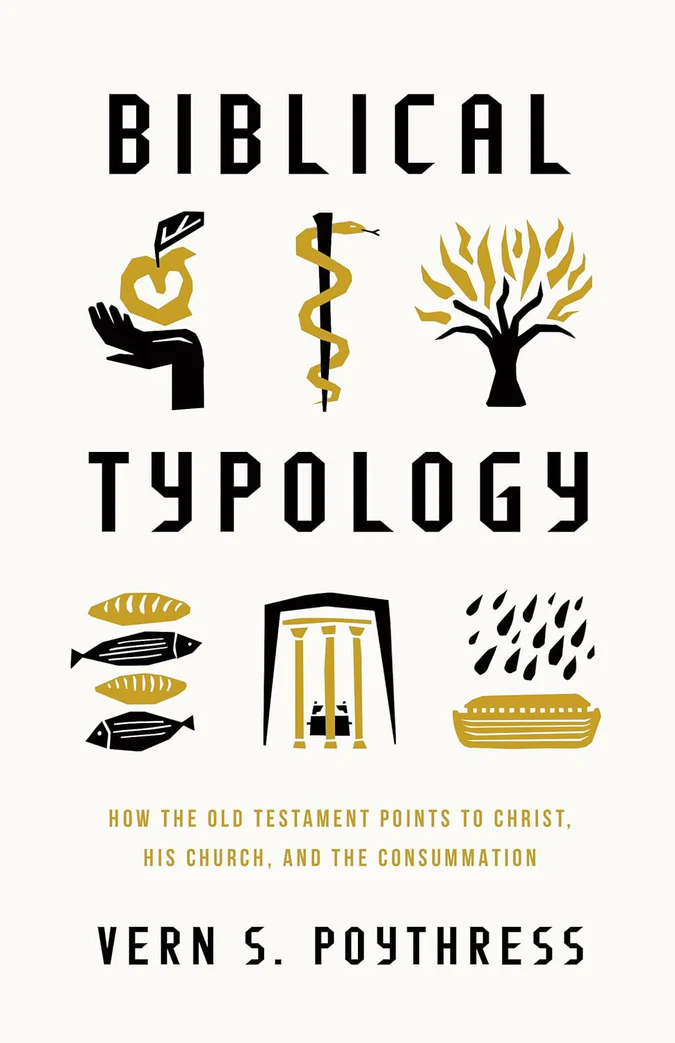
Vern S. Poythress
Reviewed by: Samuel A. Alvira
Biblical Typology: How the Old Testament Points to Christ, His Church, and the Consummation, by Vern S. Poythress. Crossway, 2024. Paperback, 230 pages, $24.99. Reviewed by OP pastor Samuel A. Alvira.
At the beginning of Biblical Typology, Dr. Vern Poythress refers to Luke 24. There we read that, on two separate occasions, Jesus says that the entire Old Testament speaks of him. More specifically, in verses 46–47, Jesus says that in the Old Testament Scriptures it is written “that the Christ should suffer and on the third day rise from the dead, and that repentance for the forgiveness of sins should be proclaimed in his name to all nations, beginning from Jerusalem.” Yet, as we confront the Old Testament, reaching this conclusion proves to be a bit of a challenge. How is it that the entire writings of history, the Psalms, and prophecies reveal Christ?
Considering how Jesus describes the Old Testament Scriptures, it is clear that God’s intention all along was to reveal his plan of salvation through his Son. This is further confirmed, as Poythress points out (7), when we read the rest of the New Testament. No doubt, finding Christ in the Old Testament is difficult, but as we investigate further how God chose, in is wisdom, to reveal Christ in history, perhaps we can see the deep and rich truth that permeates Jesus’s person and work, leaving us in awe.
One of the ways that God revealed the person and work of Jesus Christ in the Old Testament was in types. While there are many nuances that come with defining a “type,” Poythress gives a good starting point, defining a type as “a symbol specially designed by God to point forward to a fulfillment” (1).
The body of the book establishes and develops the biblical warrant, nature, and method of typology and its use for preaching and application today. In part, Poythress does this through a design by Edmund Clowney, which he calls “Clowney’s Triangle.” Examining Old Testament texts, Poythress uses Clowney’s Triangle to first point to its application in its immediate historical context, then how it points to Christ, and finally how we are to think about it now that Christ has risen and has ascended on high.
The reader will appreciate Poythress’s insistence that “Scripture interprets Scripture.” Also, there is great respect for the real benefit that the Old Testament saints would have received as immediate hearers of these prophecies. The progressive nature of God’s revelation in history is established and respected throughout the entire book. At the same time, Christ is established as the true content of the Old Testament Scriptures.
I encourage readers to slow down when Poythress begins to speak about the differences and similarities of types and analogies. While these sections of the book may be difficult at first, they will give clarity and encouragement. Also, take time to read the appendices, which will prove helpful as you travel through the book. This book will be valuable to all Christians, but particularly to the pastor as he thinks about preaching Christ through the Old Testament.
August 31, 2025
J. N. Darby and the Roots of Dispensationalism
August 24, 2025
August 17, 2025
Reformed Covenant Theology: A Systematic Introduction
August 10, 2025
August 03, 2025
July 27, 2025
July 20, 2025
© 2025 The Orthodox Presbyterian Church